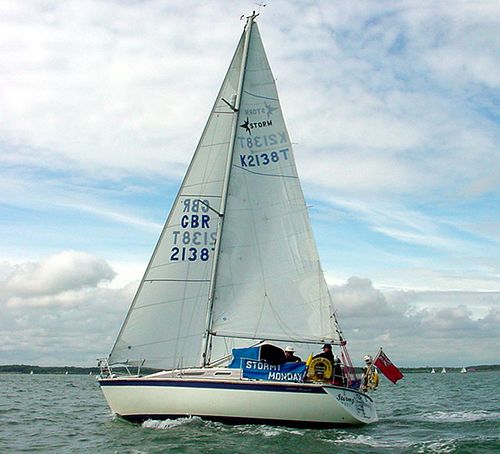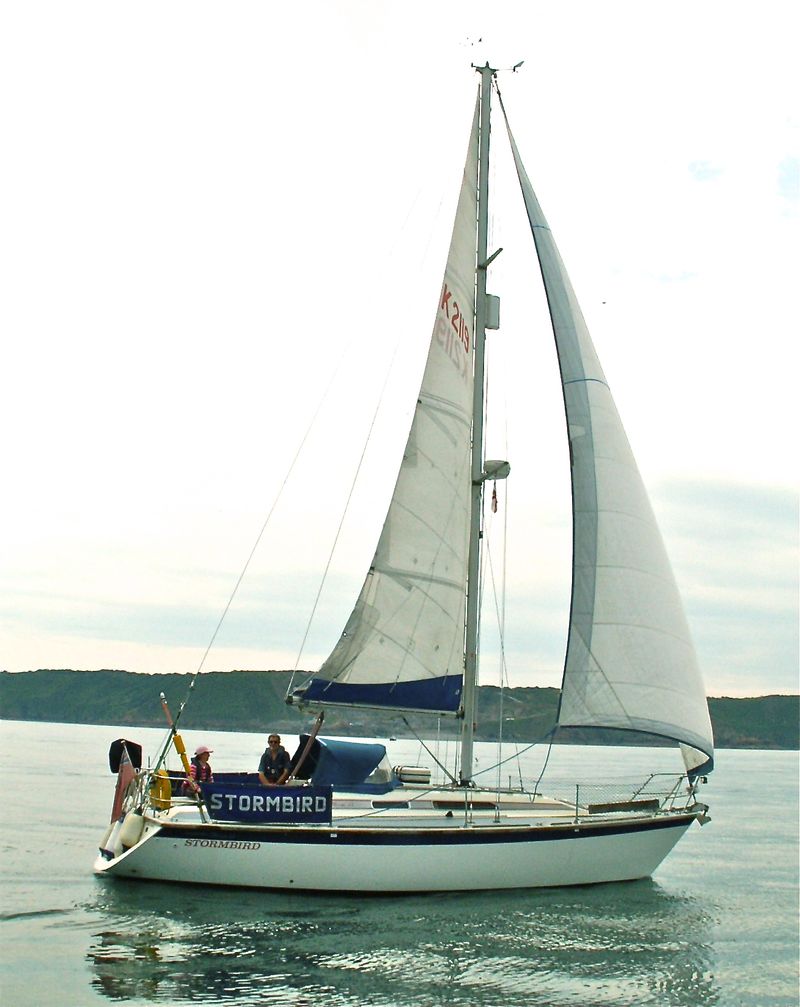Storm 33
Contents
Introduction
The Storm was conceived as a racing yacht but with the usual Westerly interior comforts. They were an immediate success and were launched at the 1986 Southampton Boat Show.
They never really took off as a racing design most of the owners using them for cruising.
See also close relations Storm Cruiser, Regatta 330,and Ocean 33.
Storm 33 Statistics
The Westerly Owners Association Definitive Guides
Nick Vass (Marine Surveyor)
One of the first things that you notice when you step inside a Storm is the rather high galley top. This is so due to the dish shape of the hull. The hull is very beamy and tapered at the wide stern.
Like all Westerly yachts the Storm is well made and strong. They resisted using interior mouldings in favour of solid joinery of hardwood and plywood. This gave the yachts a solid feel but made them look a little dated compared to contempary fare from the continent. To counter this the interior of the Storm was redone by Ken Frievokh in 1993 when the Storm was re-vamped into the Regatta 330. The interior became very posh with light cherry woodwork and Most of the Westerly range was re-badged a Regatta at that time and the vessels included the Griffon Spirit (Regatta 260), Merlin (Regatta 290), Tempest (Regatta 310), Fulmar (33) and Typhoon (Regatta 370) plus the larger cruising yachts such as the Falcon 34, Seahawk 34, Ocean Ranger 38 and Oceanlord 41 and Ocean 43. Like most post 1980 Westerly’s the Storm was designed by Lymington based Ed Dubious but the Ocean 43 was by Ron Holland.
The Storm was intended as a performance cruiser with racing abilities for a one design class but most were used for fast cruising. The bilge keel version is rare and like other Westerly bilge keelers the keels can become loose with time if they are kept on drying moorings as the keels are splayed apart. They splay on the keels is great for sailing but put great forces on the hull keels stubs, keel bolts and hull to keel bonding. Look for stress cracks on the moulded in keel stubs and tabbings/bondings breaking away from keel support webs, semi-bulkheads and locker dividers under the saloon berths and saloon sole if you are lucky enough to find a bilge keeler. Fin keelers did not suffer from cracking around transverse floor beams as the smaller fin keel versions of the Griffon, GK24, GK29 and Merlin did. This was because the Storm keel support structure was rather more generous. The better headroom allowed for taller and thicker matrix beams. However, I have seen cracking to keel support beams on Storms and Fulmars.
Early models tended to have a list to starboard due to the location of the fuel and water tanks but this problem was easily put right and made little difference when sailing. The Storm was a very good yacht indeed. Great looking, strong and sailed well. However, her sister yachts the smaller Tempest and larger Typhoon were equally good looking, sailed well too but were a little disappointing in the speed department.
One issue that helped towards Westerly’s demise was that they had too many very good, similar sized and similar looking yachts in the range. For example, I’m not sure if I could decide between the great all rounder Fulmar (later Fulmar 33) and the slightly faster Storm. Like the Storm the Fulmar had developed a sugar scoop and aft cabin but was not so beamy at 10’11” (3.3m) compared to the Storm at 11’7”. Both were offered as bilge keelers and a few Fulmars left the factory with lifting keels.
Storm Maintenance and Repair
I have replaced the #Storm #rudder #bushes. There is no rudder bearings.
I had Babar lifted as she had to be lifted over a meter, a very big hole if you decided not to lift.
When you remove the tiller you come to a circular piece with a bolt through it's middle, once you remove that bolt the rudder is free to drop. I had to pull and move the rudder for it to drop so nice and tight. I made the mistake of undoing the 5 bolts on the bottom plate, this is not necessary.
Once lifted the rudder dropped out nicely.
To take the bushes out I brought a 1.5 meter stick, I believe a broom handle. This worked very well to remove the bottom bush but it took me a long time to remove the top one. The top one is a very tight fit. I eventually removed the top bush using a large screw driver as a leaver.
I cleaned everything with 3 in 1 oil then smeared with heavy duty grease when replaced the bushes. I used a wood hammer to replace the top bush.
The bushes we made by John Blount JE & JE Blount Precision Engineers Westfield Works 23 Old Christchurch Road Everton Lymington Hants SO41 0JJ 01590 643286 j.e.blount@btconnect.com

